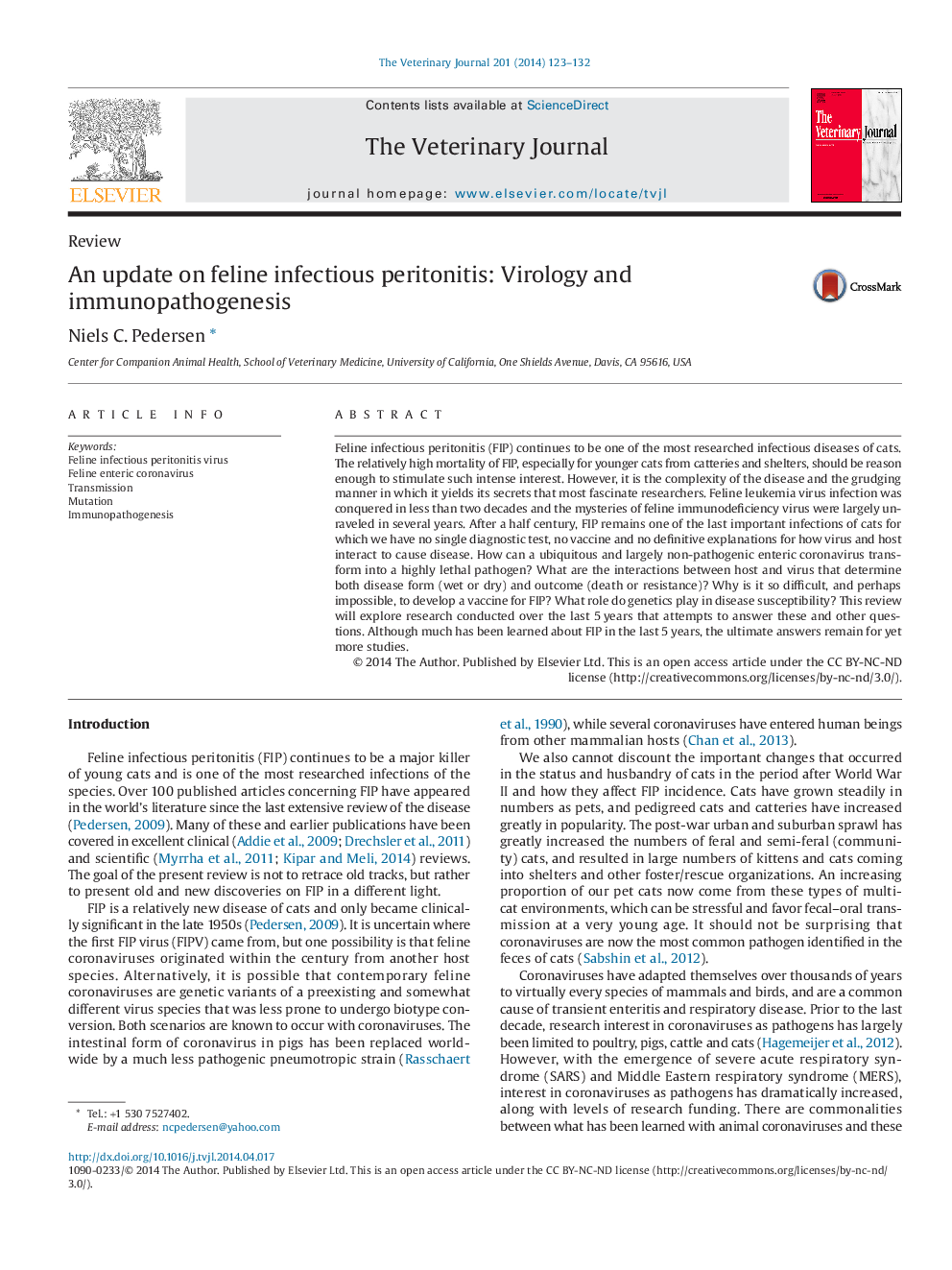| Article ID | Journal | Published Year | Pages | File Type |
|---|---|---|---|---|
| 5797866 | The Veterinary Journal | 2014 | 10 Pages |
Feline infectious peritonitis (FIP) continues to be one of the most researched infectious diseases of cats. The relatively high mortality of FIP, especially for younger cats from catteries and shelters, should be reason enough to stimulate such intense interest. However, it is the complexity of the disease and the grudging manner in which it yields its secrets that most fascinate researchers. Feline leukemia virus infection was conquered in less than two decades and the mysteries of feline immunodeficiency virus were largely unraveled in several years. After a half century, FIP remains one of the last important infections of cats for which we have no single diagnostic test, no vaccine and no definitive explanations for how virus and host interact to cause disease. How can a ubiquitous and largely non-pathogenic enteric coronavirus transform into a highly lethal pathogen? What are the interactions between host and virus that determine both disease form (wet or dry) and outcome (death or resistance)? Why is it so difficult, and perhaps impossible, to develop a vaccine for FIP? What role do genetics play in disease susceptibility? This review will explore research conducted over the last 5âyears that attempts to answer these and other questions. Although much has been learned about FIP in the last 5âyears, the ultimate answers remain for yet more studies.
